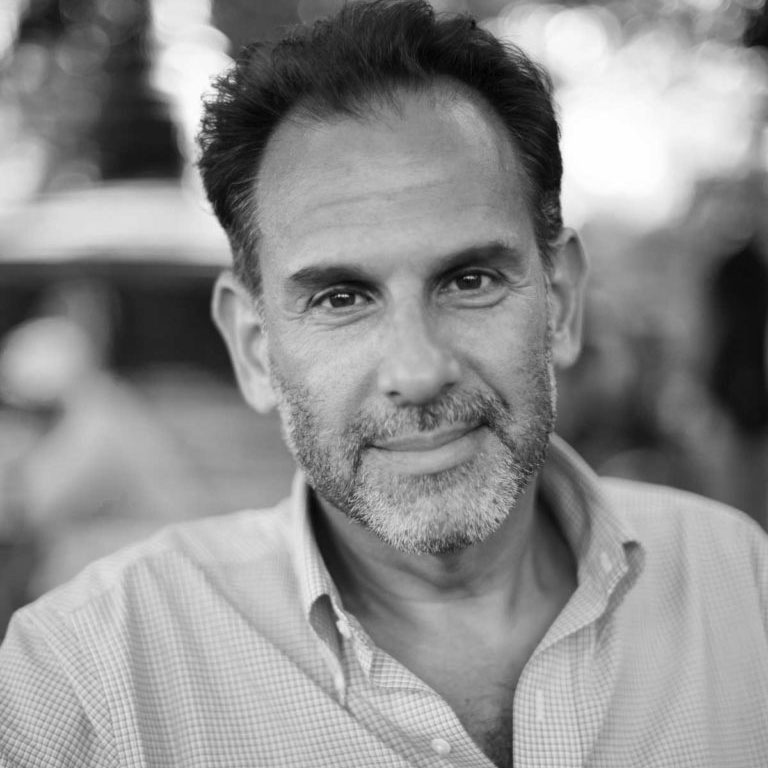Thoughts on Cooking and Immortality as We Say Goodbye to Paul Bocuse, and Remember Michael Roberts
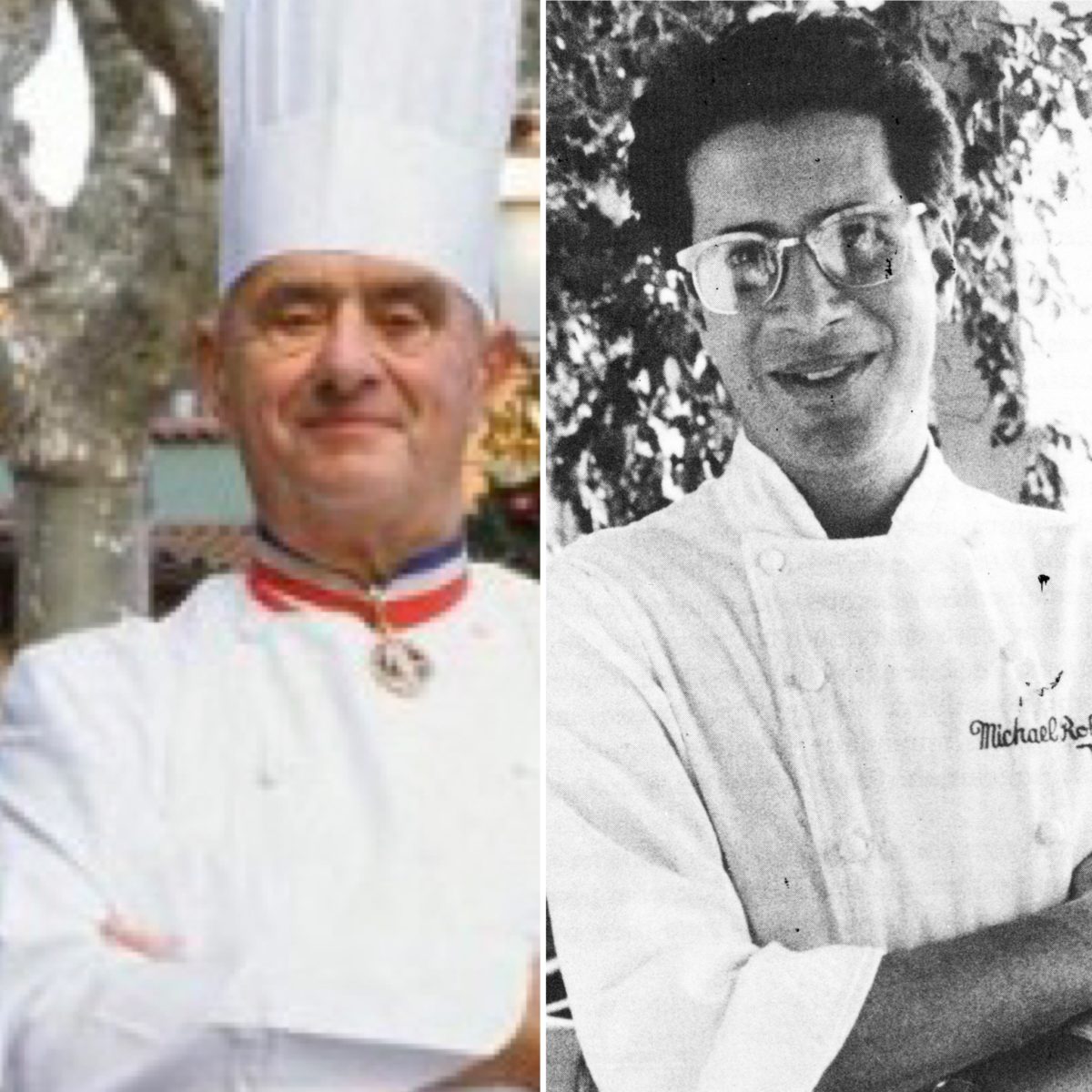
“We were prepping for a dinner. A song by Nirvana came on. A 20-year-old cook asked, ‘Who’s this?’ ‘It’s Nirvana.’ ‘Never heard of them.’ Kurt Cobain? She was born the year he died; had no idea. He’s our Elvis, you know? And, for me, gastronomy and cooking have always been about being a link in a chain. Taking from the past, making my contribution, working hard on creating a legacy … in [the] culinary [world], the traditions are so rich, gastronomy can be so rich, it benefits you to know what happened before you; to study it and to learn about it, to read about it and be fascinated by it. That’s why I told the Nirvana story. Who’s Kurt Cobain? It’s like, ‘Who is Paul Bocuse?’ I said something to a guy who was making a sauce. I was, like, ‘If you were Paul Bocuse, you would have made it this way.’ And he looks at me, and says, ‘Who is Paul Bocuse?’ An American kid from Texas, staging in the kitchen, a culinary school graduate. Who is Paul Bocuse? You have to understand who these people are, so you can move forward.”
– David Kinch
Nothing dismays a veteran chef more than a young cook’s ignorance of culinary history, especially of the talents who defined prior generations. Sure, they can name Massimo Bottura, René Redzepi, and Thomas Keller. But do they know who Jean-Louis Palladin was, or Jean Bertranou, or Jean Banchet? Those were some of the heroes of today’s superstar chefs, yet they are largely lost to the ages. And it’s horrifying to today’s toques because the logical assumption is that they will be forgotten next, just as soon as they hang up their aprons and disappear through the swinging doors for the last time.
It’s a distinct, and for many, distressing, aspect of professional cooking that chefs are so easily forgotten. Often it’s chalked up to generational myopia: “These kids today just don’t care about history.” “They’re too lazy to read up on the past; if they can’t find it on Google or YouTube, it’s too much trouble.” “They’re only interested in what’s hot.”
It’s an understandable but oversimplified point of view that misses something unique to chefs: When we lose them–either to the reaper, or simply to retirement (forced or voluntary)–they take their food with them. New menus displace old ones, and eventually new chefs supplant their predecessors. And when that happens, their dishes cease to exist. They don’t hang like art in a museum or survive in print like books, or on DVDs or in streaming video like movies and television series. Unless a chef is lucky enough to be feted by a restaurant like Next in Chicago as Ferran Adria was in 2012, or In Situ in San Francisco, where Corey Lee is performing an ongoing noble experiment treating food as art, there’s simply little for future generations to latch on to. (Whether they know it or not, this is–I believe–the reason most chefs burn to write a cookbook; to make the ephemeral permanent, to seize a little piece of the immortality most artistic souls, if they’re honest, crave.)
One of the great pleasures of writing my upcoming book about the American chefs of the 1970s and 1980s was learning about chefs I’d only heard of in passing. But that pleasure quickly morphed into anguish when I realized that crafting a streamlined narrative demanded some painful edits and that many people I felt I’d come to know through my research could only be mentioned briefly, if at all. Figuring I’m one of the last scribes who might have a crack at a book of this nature about this generation, I was, for a time, riddled with guilt over having the ability to rescue more chefs from obscurity and making the decision not to in the name of something as mercenary as readability.
I had no intention of waxing philosophical today, but the loss of the iconic Paul Bocuse over the weekend demanded it. My modest plan here in the early days of my return to posting, was to write a piece introducing you to one of those chefs I couldn’t pay proper respect to in my book, Michael Roberts, of Trumps restaurant (no relation to you-know-who) in Los Angeles. And before I go any further, I’m going to do just that:

Roberts first became known in 1980, when his free hand in the kitchen at Trumps produced such fondly remembered and for-the-time radical dishes as a guacamole of frozen peas; potato pancakes with goat cheese and sautéed apple; salmon tartare, which would in time become ubiquitous, and still is; cornmeal cakes with chicken and clams; fried plantains topped with golden and black American caviar and sour cream (the plantains were to satisfy a craving by Cuban-born Waldo Fernandez, the designer responsible for Trumps’ then-modernist interior as well as one of its owners); an omelet with tomato, cilantro, shredded beef, avocado, and potato; lobster in vanilla sauce (also influential); quesadilla with brie and grapes; and duck with black beans and pumpkin chutney.
It was an irreverent style, even for the loosey-goosey era. The New York Times once described Roberts’ food as “gleefully blasphemous” and Ruth Reichl, writing in the Los Angeles Times, enthused, “This is delicious food, made by someone who not only loves to eat, but never quite gets his tongue out of his cheek.” And if any of those dishes or ingredients seem like parody to the modern reader, take a good, long look at that kale salad and avocado toast you’re nibbling on, or recently did, or will soon, before you scoff.
Not everything worked–the New York Times‘ Marion Burros once derided his lobster salad with watermelon pickle–but the LA dining public was all-too-happy to indulge a chef’s occasional missteps in the name of adventurous eating and culinary advancement. As Jonathan Waxman, then cheffing at Michael’s Santa Monica, once said to me, “They were the most enthusiastic audience you could ever imagine. They were so enthusiastic they were overly enthusiastic. They loved everything. They tolerated the mistakes.”
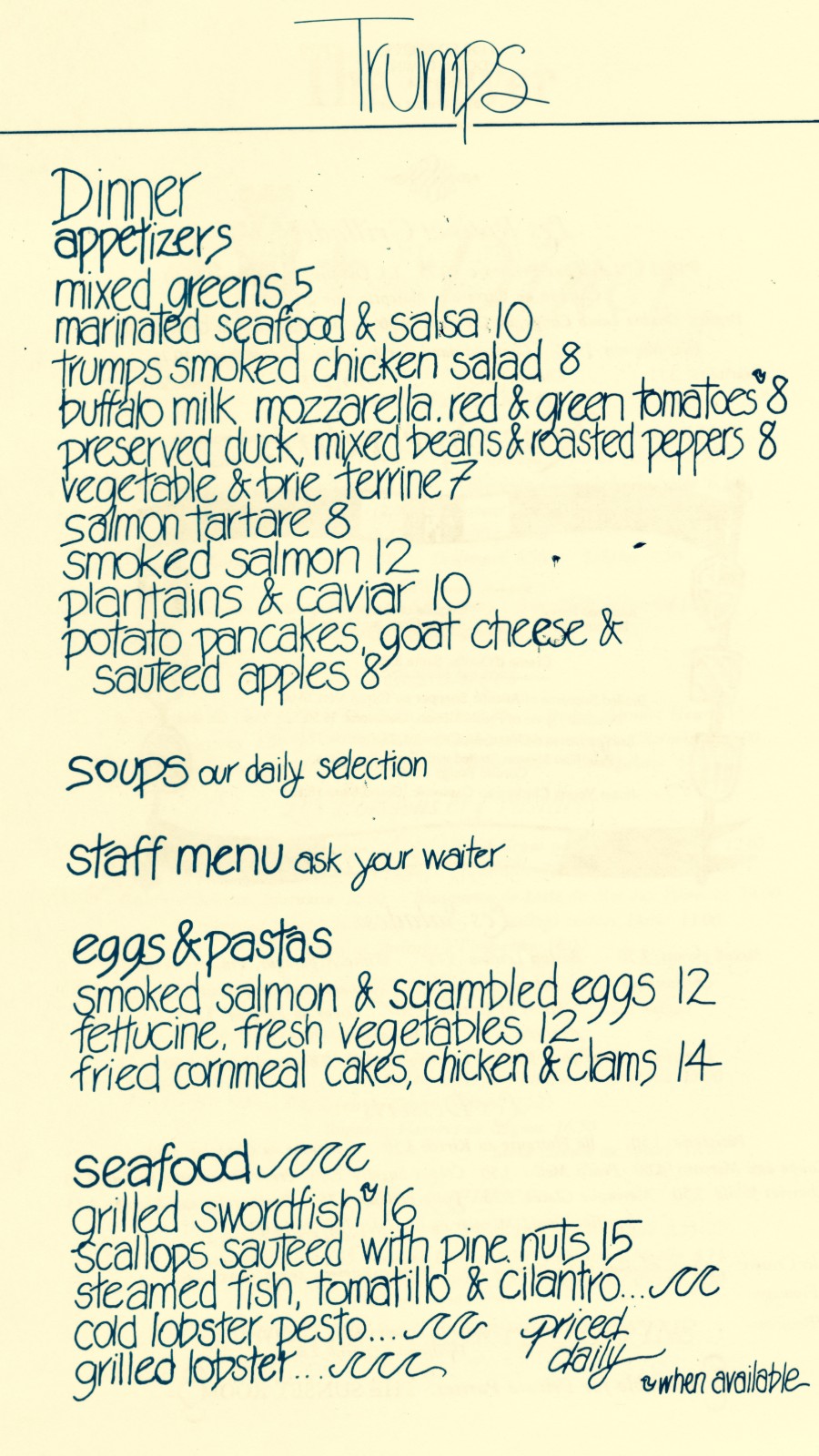
Many common themes of his generation of American chefs flowed through Roberts’ life and career: Like others who would become associated with California, he was an Easterner by birth, in his case a New Yorker. A native of Utica who was raised on Long Island and then lived in New York City, Roberts was what we’d now call a career changer–a child musician (piano and double bass) who had earned a degree in music theory from NYU in 1971. But work in that field was scarce and he found cooking expressive. He turned to Julia Child’s Mastering the Art of French Cooking, working his way through Volume 1 just in time to pick up with Volume 2 when it came out. (This was another common rite of passage in those days; Bob and Karen Pritsker of New York City’s Dodin-Bouffant, among other contemporaries, did the same, long before Julie Powell thought to blog about it.) He tried a professional gig on the line at Lady Astor’s in Greenwich Village in 1975, then matriculated at l’École Jean-Ferrandi in France, learning the fundamentals even as the instructors teased him and his classmates with talk of nouvelle cuisine. (Fun fact: In 1984, the school inspired the French Culinary Institute in New York City, now the International Culinary Center; owner Dorothy Cann Hamilton [RIP] based the curriculum on the school’s, and actually contracted Ferrandi experts to monitor and give their blessing in the early days of FCI.)
Like many who were fascinated by the nouvelle school, Roberts quickly wanted not only to be a chef, but an owner. He returned stateside, cooked for two years at One Fifth Avenue in lower Manhattan, then lit out for Los Angeles, where he started realizing his ideas at Le Soir. He bristled at the French dominance of cuisine–among his innovations at Le Soir was translating the menu to English–and quickly fell in love with California products.
“People were told for years by restaurants what they wanted to eat,” he was quoted as saying in Ellen Brown’s 1985 book Cooking with the New American Chefs. “What I’m doing is actually giving them what they want to eat, but doing it with my style.”
One story goes that Michael McCarty, of Michael’s Santa Monica, introduced him to the men who were building Trumps in a former Union 76 gas station space on Melrose Avenue in West Hollywood. Another goes that he was walking by the restaurant while it was under construction, introduced himself to the owners, cooked them an audition dinner, and they were so impressed that they each gave up some of their share to bring him on as a chef-partner.
However it happened, the 130-seat restaurant opened in October 1980 with Richards at the helm, waiters in string ties and white aprons, and an anything-goes eclecticism, offering an afternoon high tea–a magnet for power brokers from a variety of industries (including a lava-hot Eddie Murphy) as well as politicos–and late-night post-theater dinners served after 10:30pm and featuring such dishes as French toast, sautéed bananas, and bacon. (It also became a popular after-hours and night-off stop for a small but growing population of American chefs and cooks and is one of the restaurants Jeremiah Tower cites as helping inspire the spirit of his San Francisco classic Stars.)
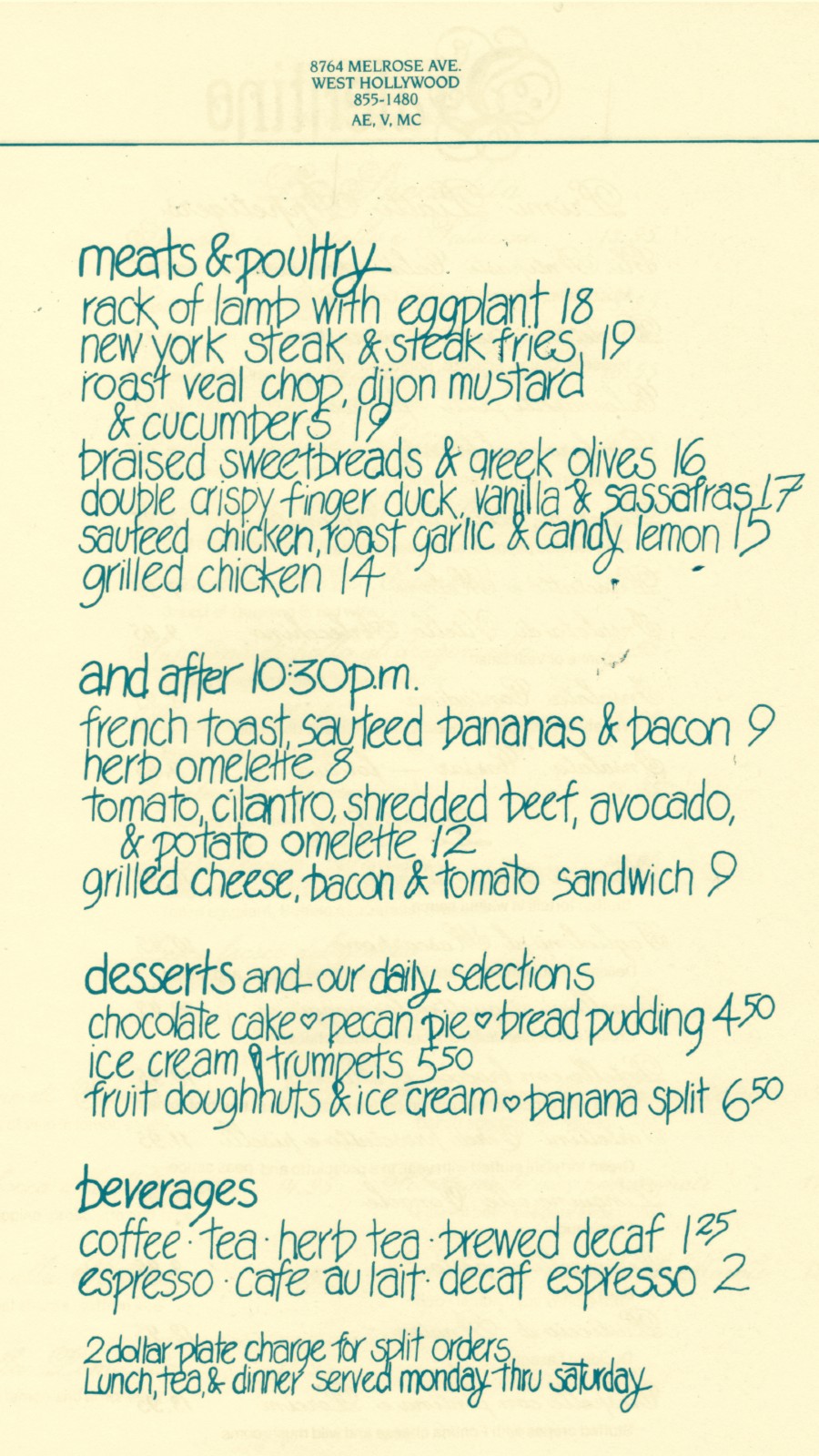
“Michael Roberts was really one of the nicer guys,” an admiring Wolfgang Puck told me in a book interview. “And I think Trumps was a very good restaurant. He was creative in his own way. I still remember he made this quesadilla with grapes and brie. What a silly thing to remember from 25 years ago. Also the design of the restaurant. Trumps was even more modern than Spago was. It didn’t have an open kitchen or anything but the restaurant, the look of it with cement tables, cement floor, nice art on the wall, very simple and white. Very LA. I think Spago and Trumps [were] the quintessential LA restaurants.”
People who were there describe Roberts as “sweet.” I vividly remember how my mention of his name stopped Ruth Reichl in her tracks when I brought him up during a lunchtime interview on a rainy afternoon sitting outside at Hudson, New York’s Back Bar restaurant. She gasped, then smiled wistfully at his memory, described him as a “sweetheart.” (She also had a special sympathy for him because she felt that his “being gay was hard in that kitchen culture.”)
“He just cooked to his own tune,” she said. “I actually have a Trumps menu, and I look at it today and I can’t believe the stuff he was serving then when nobody was serving it. He had banana pancakes and fajitas. It was just anything he felt like. And he had fun in the kitchen and he played by nobody else’s rules. He was so ahead of his time. I mean, really, you could take the opening Trumps menu and serve it in any restaurant in New York today and people would go, Oh, that’s really interesting.”
Trumps closed in 1992 and Roberts opened Twin Palms, in partnership with Kevin Coster in Pasadena, then worked for a while as a consultant. (Celebrities were flocking to the industry in these days. Erik Estrada and Elizabeth Montgomery were spotted at Trumps in Week 1; Mel Brooks and Gene Wilder both invested in Ken Frank’s La Toque; and film director and producer Tony Bill–an Oscar winner for The Sting–opened the Venice restaurant 72 Market Street in partnership with actor Dudley Moore.)
Roberts wrote a few cookbooks, including Parisian Home Cooking (Morrow, 1999), Secret Ingredients (Bantam, 1988), and What’s for Dinner (Morrow, 1993), a copy of which is next to me as I write this–proof of that little morsel of immortality those books promise.
Roberts lived out his last four years in South Philadelphia, where he died on March 30, 2005, of complications from Kugelberg-Welander syndrome, a progressive neuromuscular disorder. The disease had long-since robbed him of the strength to cook on the line, and eventually confined him to a wheelchair, though he remained resolutely adventurous, traveling internationally and taking up SCUBA diving, which afforded him weightlessness, and the ability to move freely under water in a way he couldn’t on dry land. He was just 55 at the time of his death.
What a legacy, and a life, right?
Now here’s the kicker: In my book, where the interconnected kitchens of Michael’s, Ma Maison, Spago, and City Cafe dominate the narrative of those years in Los Angeles as I tell the tale, here’s what I offer about Roberts: “Around this time, Jeremiah Tower, at the behest of friend Cecilia Chiang, who had ventured south to open an outpost of her groundbreaking San Francisco Chinese restaurant The Mandarin in Beverly Hills, made a tour of some L.A. hotspots, including West Beach Cafe and chef Michael Roberts’s Trumps, a hypercreative West Hollywood restaurant and late-night industry dining destination.”
That’s it, despite the fact that I had enough material, and even a draft section on Roberts, that I was able to bang out this profile in not-much time over the weekend.
Like I said, painful edits.
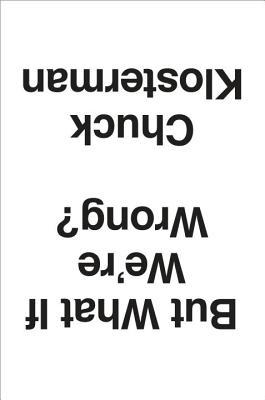
In his book, But What If We’re Wrong: Thinking About the Present as If It Were the Past, author Chuck Klosterman examines how history inevitably boils things down: Rock & Roll reduces to, say, Elvis Presley, Jimi Hendrix, the Rolling Stones, and the Beatles; classical music to, perhaps, Mozart, Bach, and a select few others. “The world happens as it happens,” he writes. “But we construct what we remember and what we forget. And people will eventually do that to us, too.”
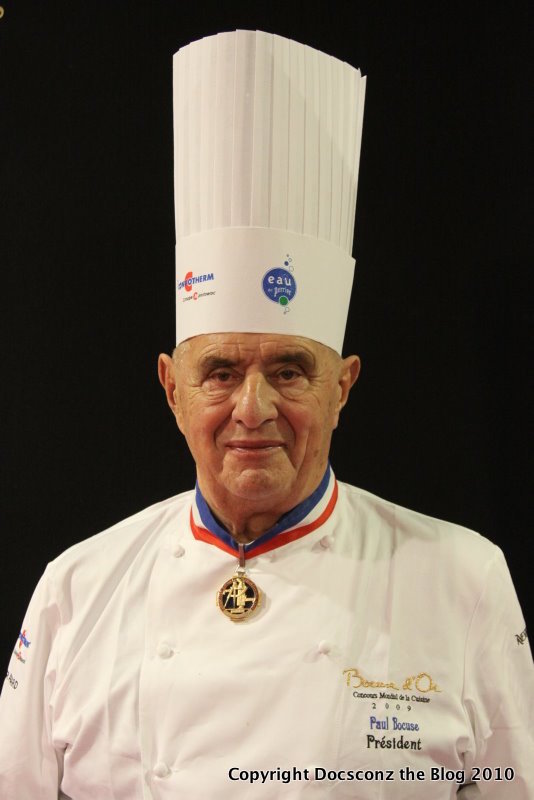
It’s a cruel reality, and one which really came home to me this weekend when I heard the news that Paul Bocuse had died, when I was already well along on my Roberts piece.
I had the honor of meeting Monsieur Paul, as he’s affectionately known, several times while writing my book Knives at Dawn about the Bocuse d’Or competition he founded in 1987, though I can’t say I really got to know him because we only ever communicated via a translator, sometimes his son Jéromé. What little I came to know about him would pale next to the remembrances being written by those who knew him better, and longer, so I won’t humor myself, or waste your time, by taking a stab at a definitive biography here.
But … a few pertinent observations: If there’s one figure of the last half-century assured a spot in any industry history, it’s Bocuse–the alpha leader of the nouvelle cuisine movement and the man most often cited as the first chef to step away from his stoves and into the dining room, conversing with guests and demanding a spot in the limelight and credit for his work. (My favorite personal exchange with Bocuse was at lunch at Keller’s Bouchon in Yountville, California, in January 2009, when I mentioned that he was credited with getting chefs out of the kitchen. He made a disgusted face, waved his arms, and exclaimed, in French, “Now it’s time for everybody to get back in the kitchen!”) As much as for his food–his restaurant, on the fringe of Lyon, has maintained three Michelin stars since 1965, and still serves a menu of greatest hits that date back decades–Bocuse will be remembered for transforming his profession, much as, for very different reasons, Auguste Escoffier is remembered for his codifying of French cuisine and helping to define the brigade system.
Bocuse was no doubt one of those chefs who a young American cook like Roberts was enticed by during his time in France. Waxman, who trained at La Varenne cooking school in Paris around the same time Roberts was at Ferrandi, remembers seeing four nouvelle cuisine leaders, including Bocuse, on the cover of Paris Match magazine. “I said, ‘That looks pretty cool,’ he remembered. “Being a chef. Being on the cover of a magazine.” Similarly The Inn at Little Washington’s Patrick O’Connell recalls an event at Per Se restaurant in New York City,when Keller gathered thirty American chefs to celebrate Bocuse. Each chef described their career path to the group and, as O’Connell remembers, “it usually involved some inspirational intersection with Bocuse and the great Michelin-starred restaurants of that era when we had nothing comparable yet in America.”

One oft-overlooked through-line of Bocuse’s life was a fondness for the United States, at a time when most French chefs and cooks mocked American culinary aspirants. Shot in the chest during World War II, Bocuse received an infusion from an American GI and for the rest of his life he was fond of saying that he had American blood flowing through his veins. (He also flew an American flag outside his flagship restaurant.) He made regular trips to the United States to promote French cuisine and sent son Jéromé to train at the Culinary Institute of America where–talk about one generation supplanting another–the Escoffier Room was re-christened the Bocuse Restaurant in 2013. Bocuse also longed for an American team to win gold in his namesake competition The Bocuse d’Or, which finally came to pass this time last year.
Bocuse’s star turn on the cover of Newsweek magazine in August 1975 was a milestone remembered to this day by many Americans who were pondering a kitchen career, including Tim Ryan, who would go on become president of the CIA: “To have a chef be on the cover of Newsweek magazine back in the day when Newsweek and Time actually meant something, that was a big thing,” Ryan told me in a book interview. “I remember buying as many as I could buy—I could only afford probably four of them—and bringing them home because I wanted to have them and show my parents what it was to be a chef. Things were starting to change then, and young people like myself were saying, ‘Wow, this isn’t just a job.’ The French created an aspiration for us.” And none drove that aspiration home more than Bocuse.
An odd parallel: Consider for a moment, the United States Tennis Association National Tennis Center, where the US Open is staged at the close of every summer. The facility is named for Billie Jean King, who altered the landscape of the sport, just as its principal show court is named for the late Arthur Ashe, who was as much a political and humanitarian figure as he was a tennis player. Those two were not the best who ever played their sport, but tennis matches, like meals, are fleeting. Which is why, it could be argued, future generations relate to, appreciate, and celebrate transformative figures more than even the most talented practitioners.
It’s also why, on this week when a giant like Paul Bocuse left us, I choose to eulogize him alongside a less-prominent colleague who was no doubt inspired by, and in many ways made possible by, him.
To some chefs, I suspect, writing about these two men in the same post verges on sacrilege, but I don’t think Monsieur Paul–who famously entered other chefs’ restaurants through the service entrance so he could shake hands with the cooks–would mind. I dare say, it’s the perfect way to remember him.
– Andrew

